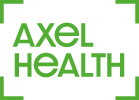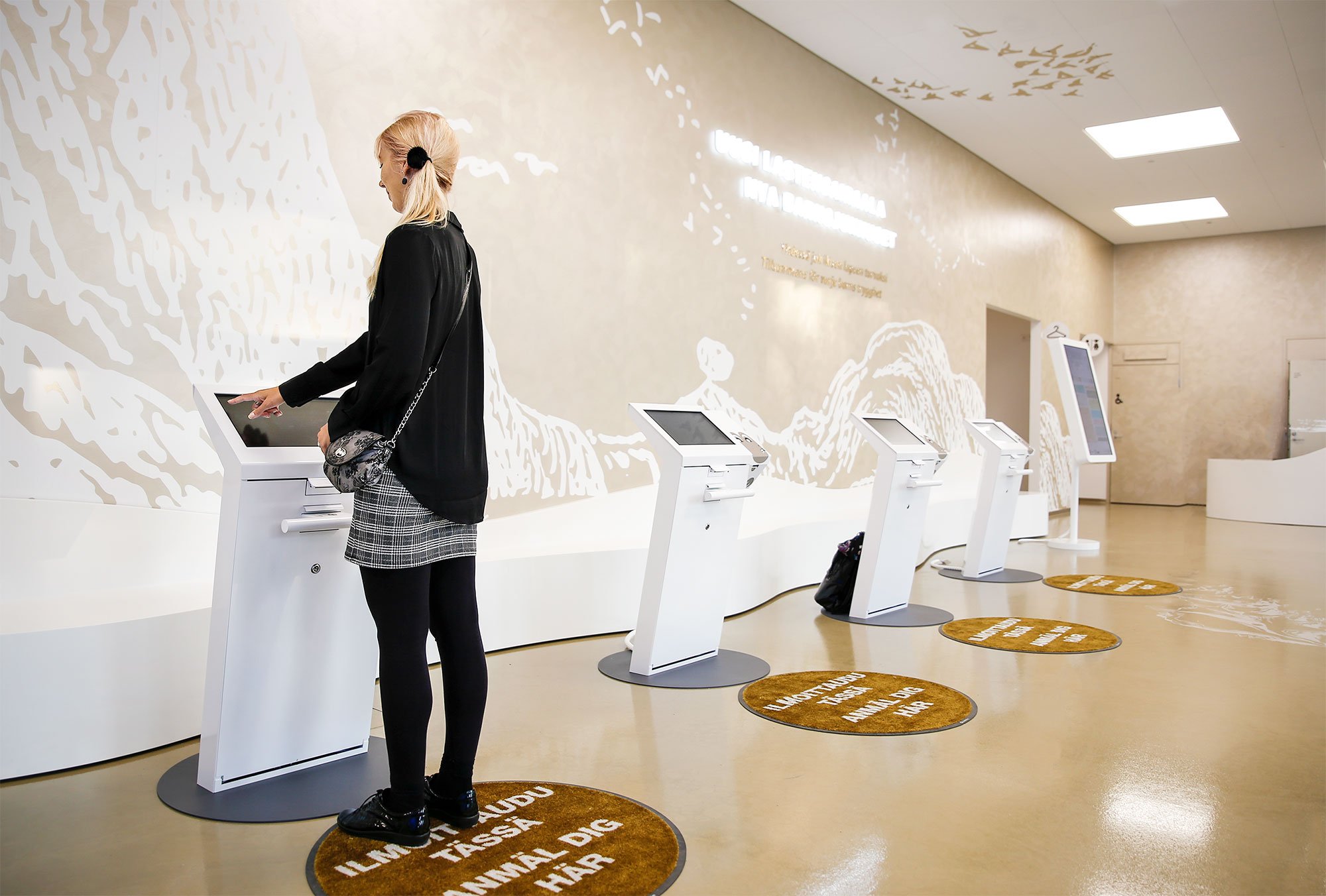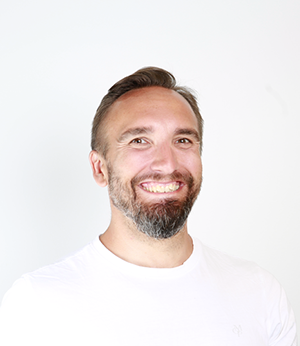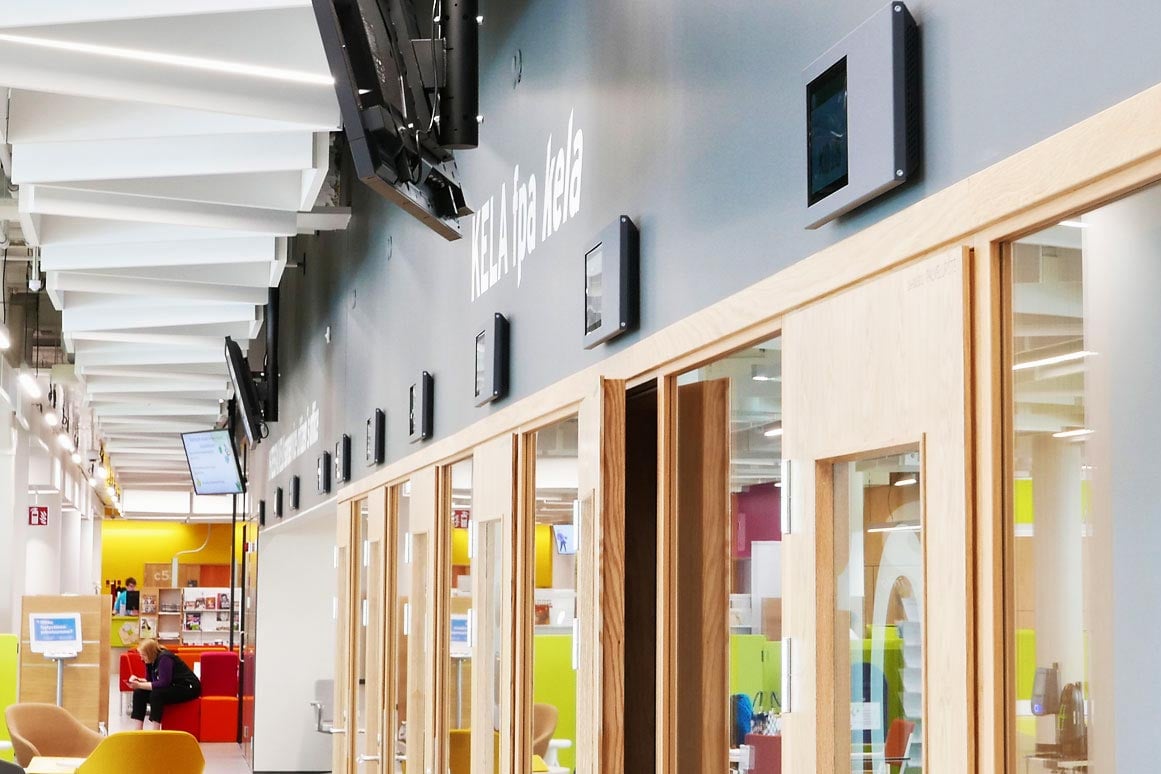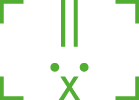The idea of digitalization, automation, and self-service solutions is to reduce employees' workload and routine tasks and to allow them to focus on more meaningful work. Especially in the healthcare sector, there is a clear need for automation - the main task of healthcare professionals is to care for patients and to spend as little time as possible on non-essential bureaucracy and paperwork.
I’ve made a list of 10 key methods that help healthcare organizations enhance treatment experience with automation. Automating routine tasks allows healthcare professionals to focus on valuable treatment work and at the same time it makes the patient experience smoother and more streamlined.
1. Self check-in devices
Self-service terminals, familiar from airports, are conquering also the healthcare sector. Healthcare organizations benefit from self-service devices by a smaller number of required resources while patients exploit an improved patient experience. The time that is usually spent on check-ins, filling out medical questionnaires, or payment actions can be significantly reduced - the automation rate reached with self service can be over 90%. In addition, devices never become tired and they don’t need much room compared to traditional front desks. The most significant benefit for both patients and healthcare personnel is that there will be less queues in the entrance areas and waiting lobbies.
2. Support systems for clinical decision making
In the healthcare sector, it’s essential to follow the Current Care Guidelines or the clinical practice guidelines based on the organization’s practices. The problem is that using this kind of information requires a lot of brain effort and applying all those recommendations and guidelines is difficult, if a doctor or a nurse must search for the required information from different medical record systems. Clinical decision support systems such as EBMEDS automate the mining of clinical data, thus improving the quality of care and reducing the effort required for information search.
3. Mobile self-service
Self-service kiosks have become more and more common during the past 20 years and nowadays you can see them in very different settings regardless of the branch of industry. In accordance with the trends in air travel, the next level of self service in healthcare industry will be mobile self check-in. Checking in to your appointment and filling out a medical questionnaire with your smartphone are efficient and safe ways to enhance the treatment experience.
In a post-COVID world, healthcare providers want to protect their patients from various infectious diseases. Using a smartphone instead of a self check-in device or visiting a front desk doesn’t expose a patient to bacteria or viruses more than normal phone usage. Call ins can also be done remotely, which means that there are no queues and patients don’t need to wait for their turn in crowded waiting lobbies or waiting rooms.
4. Payment solutions
Depending on the healthcare organization’s practices, patients pay for their visit themselves or the visit is paid by another party. If a patient is the payer and the payment must be done already in the hospital or health center, this process burdens the administrative personnel, such as unit secretaries. At the same time, queues at the front desk get longer. In Finland, many organizations have switched to e-invoicing, but clinic fees are still charged at clinics. These payments can be done with a mobile device or at self-service kiosks. It’s so convenient to get a message on your phone and simply swipe to pay before you have even stepped out of the elevator on the ground floor.
5. Optimizing the use of facilities
Patient flow management is a challenge in all larger healthcare organizations. Modern planning and forecasting solutions can help optimize the number of resources against the available room capacity. Adjusting the patient flow ensures that waiting lobbies don’t get too crowded and patients have a lower risk of getting infected.
6. Forecasting the resource needs
Short and mid-term demand forecasting models can be used to determine the resource needs of an organization. Forecasting models can be used to anticipate, for example, when the service hours must be extended. This will improve the patient experience, cut down queues, and improve the lead time of the organization’s core tasks.
7. Automated room management
In units that have dozens of treatment rooms, allocating the rooms efficiently is a huge effort. In planning, you must take into consideration, for example, types of customer cases, which specialists are working and when, and to which rooms they should be placed in. In many organizations, this puzzle game takes place in an Excel sheet. Although Excel is an extremely flexible tool, it’s also very heavy to use when the size of the unit increases. This task can be almost fully automated so that the planner only checks the results of the automation and resolves the eventual conflicts.
8. Making canceled appointment times automatically available
In service production, canceled appointments mean waste of time, money, and resources. Smart patient flow management systems provide doctors and other healthcare professionals transparency on whether a patient is already waiting behind the door or not. This allows the healthcare professional to call the person in without keeping them waiting. Additionally, modern reservation systems allow sending a message about the canceled time to other patients on the waiting list, thus reducing the amount of idle time.
9. Tracking solutions
Indoor and outdoor tracking solutions have taken giant leaps during the last 20 years. Nowadays, devices, personnel, and even patients can be tracked in huge hospital complexes. This kind of information helps in finding devices, planning the routes, tracking persons who have been in contact with each other, and in guiding patients and personnel in different phases of the treatment path.
10. Online appointments
Scheduling online appointments is one of the most common self services in the healthcare sector. Still, especially in public healthcare, making appointments is often the gatekeeper that controls the use of resources. Making appointments can be automated with the help of software that help assess the need for treatment. For example, the Axel system can be integrated with multiple background systems, such as medical report systems and radiology systems. With the help of these systems, Axel can provide one interface for creating the appointment and passing the data to all required systems.
Making the treatment experience smoother with automation is possible already now and there are many different ways to do that. Using modern patient flow management systems brings synergy to healthcare organizations that are seeking ways to improve their efficiency and these systems also enhance the patient experience. A tickling thought - I wonder what the future holds for us?
